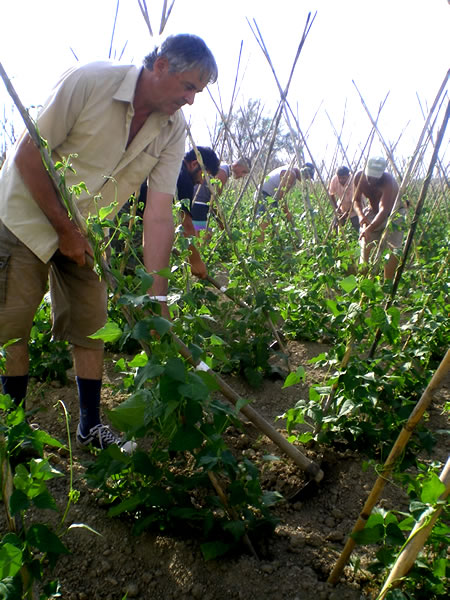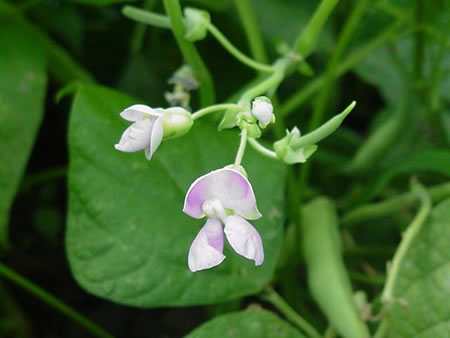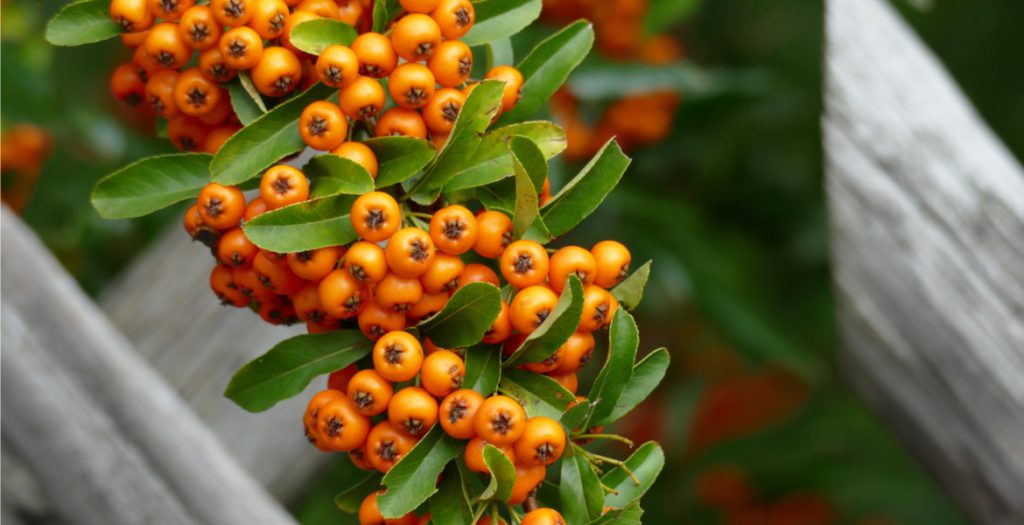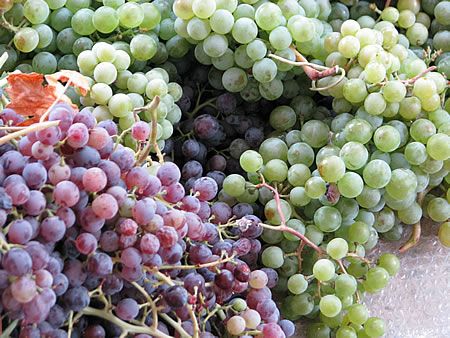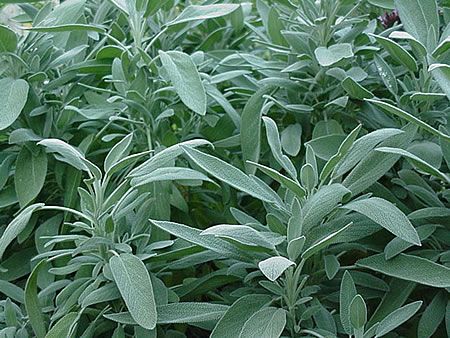Do you want to learn how to grow beans and green beans in the garden? You are in the right place!
The bean belongs to the genus Phaseolus of the family Leguminosae. The various cultivated species of bean, according to their importance, are as follows:
- Phaseolus vulgaris
- Phaseolus coccineus
- Phaseolus lunatus
- Phaseolus acutifolius var. lutifolius
All four species are diploid with 2x=22 chromosomes.
It is an annual plant, although in its wild form perennial types are also found.
The bean originated in America, from where it was brought to Europe, where it spread in the early 17th century.
In Greece, beans for processing and fresh consumption are grown mainly in the regions of Thessaloniki, Giannitsa, Achaia, Ilia, Kavala, Serres and Messinia. Beans for seed production (dry beans) are grown in the regions of Florina, Kastoria, Kavala, Aitoloakarnania, Preveza.
In total, 80.000 acres are cultivated in Greece, producing 70.000 tones of fresh beans, and 150.000 acres of dry beans, producing 25.000 tones (1993 data).
Characteristics of the bean plant
Bean’s rootstock
This is the root of a bean plant only 12 days old. From the top of the plant to the end of the root, the length is 30 cm!
The bean’s root system is quite developed, consisting of a weak, primary root and numerous secondary roots. The secondary roots are more robust and completely replace the main root. The main root reaches a depth of 50-60 cm and the largest number of secondary roots are located at a depth of 20-30 cm and extend to a radius of 45-60 cm from the main stem. The root is inhabited by the nitrogenous bacterium Bacterium radicicola and fixes atmospheric nitrogen, which can be used to nourish the plant.
Bean shoot
Bean varieties are divided according to the length of the shoot:
(a) dwarfs
(b) climbing
(c) semi-climbing
In dwarf varieties the shoots are herbaceous, erect, cylindrical and strongly branched. The elongation of the stem stops with the formation of the top inflorescence. They are 30-60 cm tall and are self-supporting due to the hard central stem.
In plants of climbing varieties, the stem is thinner and rarely branches. The internodes are large, not ending in an inflorescence but continuing its growth up to 2-3 m. On the lower knees of the central shoot, a few lateral shoots may be formed.
In the plants of semi-dwarf varieties, the stem is of medium length and a few shoots are formed. It can also be said that climbing varieties grow at a slower rate than dwarf varieties.
Bean’s plant leaves
Bean leaves
The leaves of the bean plant are compound, trilobed or penta-lobed. Both the leaves and the stems are fuzzy with long stalks.
Bean’s plant flowers
Bean flowers
The bean flowers are small and borne in axillary inflorescences of 2-6, at the end of a floral axis that is shorter than the stem of the corresponding leaf.
The color of the flowers is white, pale yellow or reddish-blue. Flowering occurs during the early morning to early midday hours. Flowering lasts up to 20 days for dwarf varieties and much longer for climbing varieties. Pollination in the bean is mainly by self-pollination.
Bean’s plant fruit
The fruit is lobed, 8-20 cm long and 0,6-2,0 cm wide, with a cylindrical or broad cross-section. The color ranges from green of various shades to yellow. It has 4-9 seeds, but rarely contains more than 5 seeds. The seed varies in size, shape and coloring of the sheath and number per pod.
Climate and Soil
The bean thrives in warm periods of the year and does not tolerate frost. Temperatures below 15 degrees Celsius and above 30 degrees Celsius are detrimental to the plant. However, its short biological cycle allows it to be cultivated even in temperate areas with a short growing season.
At sowing, soil temperatures at a depth of about 5 cm should be between 15 and 30 degrees Celsius, with an optimum of 26-27 degrees Celsius. At 15 degrees Celsius the seed germinates in 16 days, at 25 degrees Celsius it germinates in 6 days (but only about 50%), while at temperatures above 35 degrees Celsius and below 10-12 degrees Celsius the germination of seeds of most varieties is impossible.
The optimum air temperatures for plant growth are 21-26 degrees Celsius. Fruit set is impossible at temperatures below 10 degrees Celsius and above 32-33 degrees Celsius. The combination of high temperature and low relative air humidity causes flower drop.
Very high temperatures, particularly in combination with a lack of moisture in the soil, can cause incomplete fertilization resulting in poor seed development and deformed pods.
Low temperatures during the pod ripening period in the autumn may prevent normal seed development, resulting in empty pods unsuitable for industrial processing.
High relative humidity and rainy weather may cause flower drop.
Varieties differ in their susceptibility to extreme environmental conditions.
Soil requirements
Light soils, drained and warmed in early spring, are suitable for early sowing. Sandy to clay and organic soils can be used for growing beans, but heavy soils do not produce high yields. Poor drainage can cause root rot.
The plant prefers slightly acidic soils (pH 5.5-6.5) but grows well in pH 5.5-7.0. However, it does not thrive in alkaline soils, which may be deficient in Mn (Manganese).
Fertilization of beans
Beans have moderate fertilization requirements. However, because the plant has a short biological cycle and a relatively limited root system, high soil fertility is required for high yields.
To produce one tone of pods, approximately 15 kg N (Nitrogen), 1.5 kg P (Phosphorus) and 11 kg K (Potassium) are removed from the soil.
Balanced and timely fertilization is required. Because the plant grows and matures quickly, the use of fertilizers that release their nutrients immediately (e.g. nitrate form of nitrogen) is required.
The required nitrogen fertilization usually ranges from 5-15 kg/acre, depending on the organic matter in the soil. In irrigated crops, surface N fertilization (35 kg/acre) is also applied, distributed in 2-3 doses. Excessive nitrogen fertilization during flowering may cause flower drop.
Depending on the fertility of the soil, fertilization with 15-20 kg P2O5 and 10-20 kg K2O is recommended. Usually, 80% of P and 60% of K are applied before or at sowing, but care must be taken to avoid the seed coming into contact with the fertilizer (which increases the density of the soil solution) because the bean is very sensitive to salts (maximum resistance limit 1.0 ds/m). The fertilizer is placed well away from the seed, about 5 cm below the seed and at a lateral distance of 5-7 cm.
A total of 4-6 kg/acre of MgO is required.
Bean is very sensitive to excess boron. If irrigation water contains more than 1 ppm boron, a significant reduction in yield is observed.
It is a plant with high susceptibility to Mn, Zn and Fe deficiency.
Cultivation Technique
Supporting bean plants
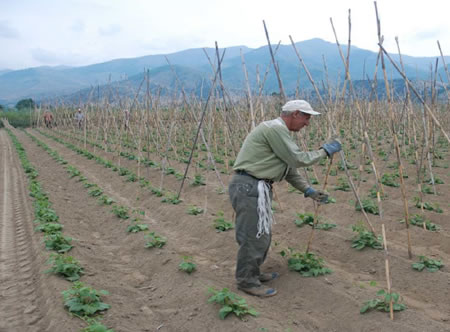
The plants of the climbing varieties are usually supported with reeds or thin wooden stakes.
Weeds control
Annual grasses are the main weeds that cause problems for early bean sowings. To protect young bean seedlings from them, it is good to incorporate a herbicide into the soil before sowing and to apply another before the bean germinates.
Late-seeded plants are mainly competed by broadleaf weeds (which grow later) and a suitable post-emergent herbicide is recommended for their control, post-emergent to bean.
Partial weed control can be achieved by careful (at a depth of 2.5-3.0 cm) mechanical tillage of the soil to avoid destruction of the surface roots, which are an important part of the plant’s root system. Mechanical tillage must be stopped as soon as flowering begins because the plants are then very susceptible to injury.
Irrigation
The bean has a medium-deep root system. A sufficient level of moisture throughout the plant’s biological cycle is a prerequisite for high yield and quality, as well as uniform plant growth. During high growth rates at high temperatures, plants may need up to 5 mm of water per day. In light soils, irrigation may be required every 3-4 days.
Lack of moisture during flowering and fruiting causes bloom and fruit drop. Also, lack of moisture, combined with high transpiration due to high temperature, may cause pod deformation. Depending on the growing season (spring, autumn), the moisture required to complete the bean’s biological cycle can vary from 300-450 mm.
Sowing beans
The bean is propagated by direct sowing in the field.
Sowing in spring is carried out after the risk of frost has passed. In order to provide raw material for the industry and a product for the fresh consumption market over a long period of time, successive sowings are carried out, starting in early spring and ending with sowing 50-60 days before the first frost in autumn. For the seed to germinate quickly, the soil must be well prepared (15-20 cm deep) and there must be sufficient moisture for rapid hydration of the seed. Since the seed cotyledons are propelled out of the soil during germination, the formation of a crust on the surface of the seed greatly hinders germination and reduces the number of plants per hectare.
Sowing distances
a) The “dwarf” bean, which is harvested mechanically, is sown in rows 30-60 cm apart, with a plant spacing of 15-25 cm on the row. The sowing distances are determined on the basis of the vigor of the variety, the fertility of the soil and the size of the machinery available for cultivation and harvesting. In relevant experiments it has been found that the ideal plant population per hectare is about 40 000 plants.
b) Climbing varieties are sown either in rows or in post). The rows are usually 100-120 cm apart and the plants on the row are 20-25 cm apart.
In the case of sowing in clusters, 4-6 seeds are sown in each position, which are spaced 100-120 cm apart (in both directions). After germination, the seedlings are thinned and 3-4 plants are left in each testicle, usually supported by reeds or string. In general, dense sowing increases the yield and produces a uniform product in terms of size.
Depending on the variety (seed size) and sowing distances, 5-12 kg of seed per hectare are required.
The sowing depth is usually 2-5 cm (the shallowest depth is for moist and heavy soils).
Harvesting beans
The main maturity criteria for harvesting the common bean are the size of the pod and the degree of seed development. Harvesting takes place before the pods reach normal maturity and when the seeds are partially developed. At this stage, the pods are pale yellow in color. The flesh of the pod must be crispy, with few fibers (threads at the points where the fruit leaves are joined) and the surface must be smooth, with no visible swellings from the developing seeds. Harvesting must be done in good time, because the pods over-ripen quickly, at which point tissue hardening and excessive seed growth begins.
Modern machines used for harvesting dwarf bean varieties separate the pods from the rest of the plant parts.
Mechanically harvested pods may have microtrauma (which is conducive to microbial attack) so they must be processed immediately by the industry or immediately placed on the fresh market. In general, mechanical harvesting results in product losses of 5-25%.
Dry beans are harvested when the pods are fully mature and sufficiently dry. At that time, the seeds have 16-20% moisture content. If dry beans are harvested at less than 14% moisture, they may be damaged during mechanical harvesting (the cotyledons, embryo or hull) and the germination capacity of the seed may be reduced if it is to be used for propagation.
Preservation of beans
The bean, being a very perishable product (it has a very high respiration rate), requires immediate chilling after harvesting to maintain quality at satisfactory levels. Pre-chilling at 3-5 °C is preferably done with cold water to avoid wilting or wrinkling of the pods. Defrosting at a temperature below 3 °C causes spotting of the pods.
Dry beans are stored at 5-10 °C and 40-50 % relative humidity for a period of approximately 6-10 months. If the water content of the seeds is below 14%, then the relative humidity of the storage should be about 70% to increase the moisture content of the seeds to avoid bursting of the hulls during storage and handling.
Varieties of beans
There are a large number of bean varieties, classified into groups according to the type of vegetative growth, pod and seed characteristics and the way they are consumed.
The freezing industry prefers dwarf varieties with green elliptical or rounded pods, without fibres.
For canning, varieties with white or light-coloured seeds are preferred because the processed product has an attractive colour and, in addition, because the liquid phase in the can is not coloured by the pigments in the coloured seeds.
The bean varieties grown for dry beans are dwarf or climbing varieties with seeds of varying size and colour
In Greece, Phaseolus coccineus varieties are also grown as climbing varieties, which produce large, white seeds (giants, elephants) that are eaten dry.
With regard to the varieties grown for fresh beans in Greece, several genotypes imported from abroad and grown mainly for the industry are used. However, on a fairly large scale, local traditional varieties, such as Barbounia (dwarf and climbing), Canarinia (climbing), Aisedes, etc., are also grown for the fresh consumption market.
Nana beans
Contender

Early dwarf bean, round in cross-section. Plants are grown upwards and are resistant to harvest manipulations. The pods are 16 cm long and 1.2 cm wide. Their color is deep green. They contain 6 seeds and are completely anaerobic. A productive variety with a good season.
Mavromatiko (Black-eyed beans)
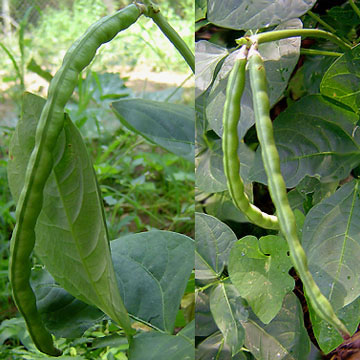
Semi-crispy bean with round pods. The length of the pods is approximately 20 – 23 cm, and the width is 1.2 cm. Their color is deep green. The seeds are small in size and beige in color with a black eye. It can even be grown dry. Suitable for consumption both as green and dry.
Garrafalenana (Intermediate Pod)

Mid-early sedentary bean variety (59 days old). The pods are 20 cm long and 1.8 cm wide. A productive variety with relative cold hardiness.
Zargana Kavalas (Intermediate Pod)
Greek bean variety for fresh consumption. The pods are light green in color, 17 cm long and 1.6-1.9 cm wide. The plants are grown upwards and very robust. This variety is grown mainly in northern Greece and is renowned for its agronomic and organoleptic characteristics.
Starazagorsky (Wide Pod)
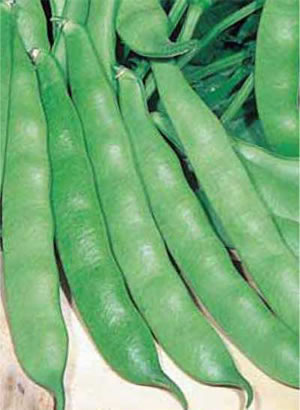
A well-known variety that has been cultivated for years in Greece under the name Kontobarbuno. Early bean, with flattened, white, light green pods. The length of the pods is around 12 cm and their width around 20 mm. The color of the seeds is black. It is grown throughout Greece for early and late harvesting. The pods are suitable for fresh use.
Borloto Linqua Di Fuogo Nano (Wide Pod)
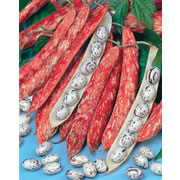
Medium-ripened beans intended for fresh consumption of the pods, for consumption of the semi-dry seeds (shelled) and for the dry seeds. The pods are approximately 13 cm long and 19 mm wide, have an ellipsoidal cross-section and are white-green in color with red spots and streaks. The seeds are large and cream-colored with red streaks. It is cultivated throughout Greece and especially in Boeotia (Tanagra) in late sowing.
Cannelino (For dry beans)
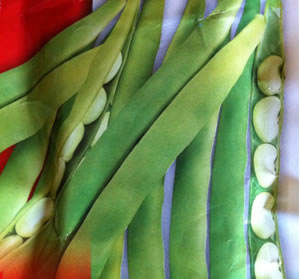
Early selection of the variety known in Greece as Chorozi. The plants are dwarf, robust with concentrated flowering. The seeds are typical of the variety, i.e. elongated, slightly elliptical. Their color is white and the weight of 1000 seeds is about 500 g.
Climbing beans
Kentucky Wonder (Narrow Pod)
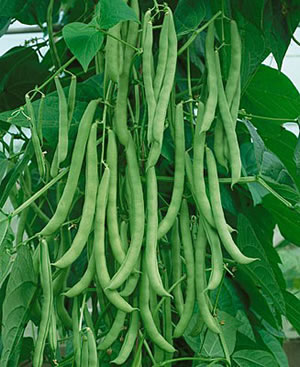
A variety of bean grown for years in Greece, the pods are round in cross-section and 20cm long. The color of the pods is green and the seed is (depending on the selection) white or brown. It is intended for fresh consumption of fresh pods.
Zargana Chrysoupolis (Intermediate Pod)
Cultivar suitable for fresh consumption. The pods are light green in color and have a flattened cross-section. Their length varies between 17-20 cm and their width between 1.7-2 cm. Zargana is distinguished by its productivity and its organoleptic characteristics. As an indigenous variety, it is fully adapted to our soil and climate conditions, which is why it is superior to imported varieties.
Borloto L.D. F.2 (Platys Pod)
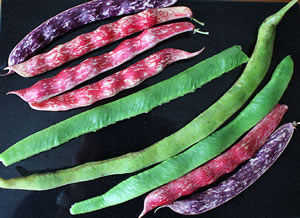
Medium-ripened beans intended for fresh consumption of the pods, for consumption of the semi-dry seeds (shelled) and for the dry seeds. The pods are approximately 13 cm long and 19 mm wide, have an ellipsoidal cross-section and are white-green in color with red spots and streaks. The seeds are large and cream in color with red streaks.
Canarini Meraviglia (Flat Pod)

Early climbing variety for fresh consumption. The pods are flattened, large and yellow in color. They have no fibers and are very tender. The weight of 10 pods is 110 -120 g. and they contain 4 – 7 beige-colored seeds. They are distinguished by their excellent organoleptic characteristics.
Giant Prespa beans
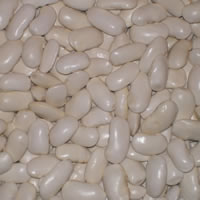
The giant beans of Prespes – Florina, Greece (40-45 beans /100g) come from the same Greek bean variety of excellent quality.
They come from the area of the Prespes lakes in the prefecture of Florina, Greece and have become a local tradition for generations. Their quality is due to the combination of the microclimate and the soil composition of the area where they are grown in the contiguous agricultural areas of the municipalities of Mikrolimni, Karna, Lefkonos, Plateous, Lemos, Agios Germanos, Agios Achilleios, Vronteros and Kallithea. The “giants” are also a climbing variety with white seeds, but slightly larger than the giants and kidney-shaped. Varieties with tender pods are also used here. It has a large production and is in great demand by consumers. The quantity of seed used per acre is 8-9 kg.
Large-seeded Flat Beans of Prespa
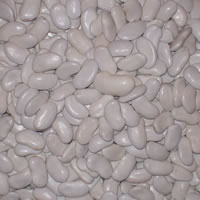
Created by selection among the population of the Alexandria area. Plants bear small tendrils, seeds are small, white, with thin bark and pressed lateral. It is a variety of medium earliness with suitable sowing in early April. It has good adaptability and prefers fertile and irrigated fields. Its productivity is high and its quality is excellent. The seed rate per acre is 10-12 kg.
Coloured Giant Prespa Bean
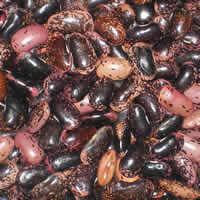
Cultivated in recent years in the Prespes, Greece area, it is a climbing variety, very similar to the giants but differs in the color of the pods, i.e. it is purple or brown with a black umbilical ring. It is in increasing demand by consumers. The quantity of seed used per acre is 8-9 kg.
Plant protection of legumes
The most common diseases and pests of legumes are:
Diseases
Fusarium solani f.sp phaseoli (bean)
Causes brown rot to the branches and yellowing of the leaves.
Anthracosis Colletotrichum lindemouthianum (bean)
Colletotrichum pisi (peas)
Young plants (from infected seed) show black lesions on the cotyledons and stem. On older plants, the lesions form deep spots 8-10 cm deep on the stem and leaves and smaller (up to 1 cm) on the pods.
Macrophosina phaseoli (bean)
Occurs mainly in moist, cohesive soils. Seedlings from infected seed show a black, irregular wound under both leaves, which rapidly progresses upwards (top blackening) and dries out the plant. In mature plants, the shoot becomes dry and small black sclerotia appear on it (a means of spreading the disease to other plants).
Phytophthora phaseoli
It produces yellowish-brown spots on the leaves which have whitish fuzz on the corresponding lower surface. In peas it also forms spots on the pods.
Rhizoktonia solani
It attacks plants on the neck causing a deep wound, initially red and then black. Young plants are destroyed and older plants remain stunted.
Sclerotinia sclerotinia sclerotiorum
Manifested by wet rot on the neck of the plant and drying. It spreads to shoots, leaves and pods. White mycelium develops on the affected parts and small, irregular, black sclerotia are formed inside.
Uromyces appendiculatus (bean)
Uromyces pisi (peas)
The leaves (lower surface) are mainly affected and less frequently the pods. Initially small white-green pustules are formed, which later open up to produce piles of rust-colored ured uredospores. Finally, the spots become almost black from the teptospores, the leaves dry out and fall prematurely.
Erysiphae polygoni, Erysiphae pisi
Causes irregular brownish-red spots on the aboveground parts of the plant (mainly on the leaves), covered by white mechium. In heavy infestation, the leaves become deformed and fall off. It rarely causes serious damage to peas, usually towards the end of the season.
Bacterial diseases Xanthomonas phaseoli and Pseudomonas phaseolicola (bean)
Pseudomonas pseudomonas pisi (peas)
On beans they cause oily spots on the leaf, surrounded by a chlorotic band and growing may cover the whole blade. Eventually they dry out and turn brown. Similar spots may appear on the shoots, pods and seeds. In peas, brown necrosis appear on leaves and shoots and in pods, oil-colored spots that progress in depth to the seeds.
BCMV viruses common mosaic of bean,
BYMV yellow bean mosaic PMV common pea mosaic
In most cases, the symptoms of the three viruses coexist. Common bean mosaic causes alternating green and yellow coloring of the leaves, distortion (the periphery of the lamina is turned downwards) and dwarfing of the plant, resulting in a reduction in yield until it reaches apoplexy. Yellow mosaic is manifested by numerous reddish brown spots on old leaves and yellow spots or discolored bands on new leaves.
Pea common mosaic virus causes light coloration of leaf ribs and yellow mosaic.
Enemies
Soil insects: the onion-eater Gryllotalpa vulgaris, Agrotis spp. and Elateridae
They eat the underground parts and partly the stem and lower leaves.
Aphids Aphis fabae (black), Acythosiphum pisum (green)
Infestation of peas is most severe. They suck the sap from leaves (they shrivel and twist), young shoots (they become stunted) and pods (when not controlled in time and the infestation spreads), weakening the plant and reducing production. In addition, they are vectors of viral diseases.
Brush Acanthoscelides obtectus (in dry bean culture)
The insect oviposits on the pods and the larvae penetrate the seeds. Damage continues in storage, because this bryophyte has 4-7 generations per year.
Tetranychus spp. (bean)
Usually found abundantly on the undersurface of leaves, sucking and drying them. They can be distinguished by the tissue they form.
Caterpillars of the pods
Etiella zinckenella (bean)
Laspeyresia nigricana (peas)
The caterpillars of these Lepidoptera eat the immature seeds inside the pods.
See also
Organic Prespa Beans, stages of cultivation
Bean, Institute of Agricultural, Economic and Sociological Research, National Agricultural Research Foundation
Tags: BEANS • CULTIVATE • CULTIVATION • GREEN BEANS • INSTRUCTIONS • TIPS • VARIETIES

